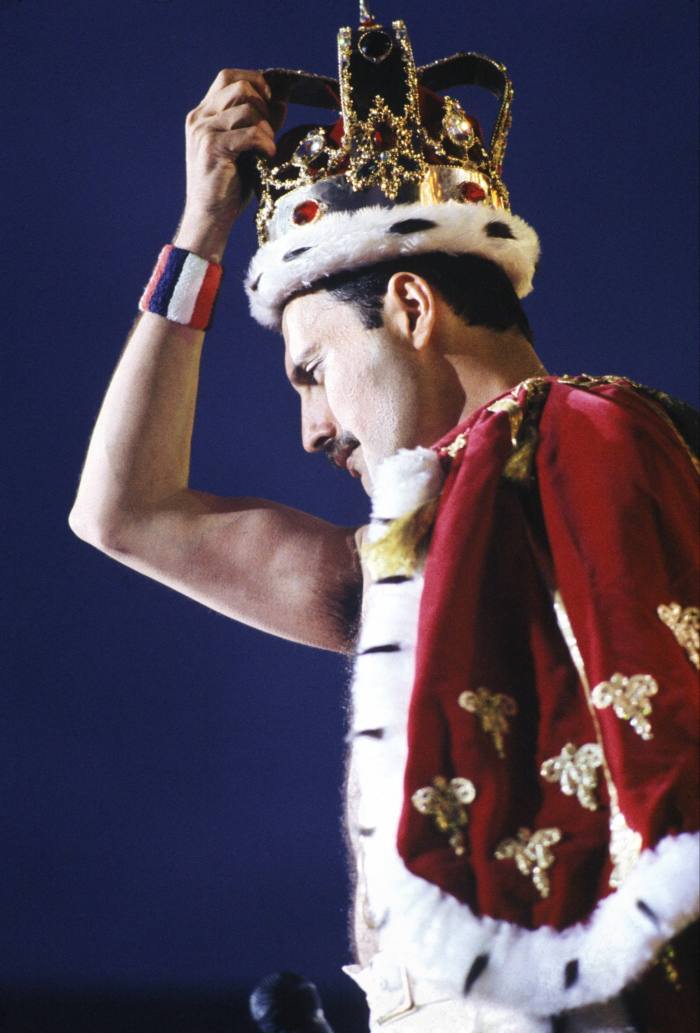Here we stand or here we fall
I’m standing outside the plain green door of a house in London’s Kensington, huddled against an 8ft-high wall, seeking shelter from a persistent drizzle. Two young women under umbrellas approach the house tentatively, and one asks me, in a thick Italian accent, if this is the “Freddie Mercury Museum”.
Not really, I reply. It is certainly the house where the famous Queen frontman lived during the 1980s, and this was the very wall that was bedecked with flowers and love-notes following Mercury’s death from an Aids-related illness in 1991. But it was not, and never has been, open to visitors, I explain. The two women leave, a little crestfallen, and I proceed, somewhat guiltily, through the door that has been opened for me.
Not only am I receiving the rare privilege of visiting Garden Lodge, the elegant and discreet Georgian-style villa designed for an artist couple in the early 20th century which Mercury acquired in 1980; I will also see it, for the last time, in exactly the condition in which he left it. The following day, all Mercury’s possessions, art works and furniture will be collected by Sotheby’s, to be displayed and then put up for sale in a series of auctions in September.
I walk through a beautifully kept garden that’s dominated by a magnolia tree about to come into full bloom, and I’m greeted by Mary Austin, the woman who has been living at Garden Lodge for the past 30 years. I peek inside the entrance hall, and we may as well be in the Freddie Mercury Museum. One thing is for sure: I am in the company of the best, perhaps the only, person in the world suited to having been its custodian.
Austin is, famously, one of the most important people in Mercury’s turbulent life, and also one of the least quoted. The pair began a relationship in the early 1970s, before splitting up in the middle of that decade. But they remained best friends. The singer’s numerous references to her during his life — the 1975 ballad “Love of My Life” was dedicated to her — attests to his dependence on her quiet support. He left Garden Lodge, and all its possessions, to Austin in his will.

She, in turn, has remained silent on their relationship, and indeed on any other aspect of his life. Given Mercury’s similar reluctance to talk to the media, their story remains remarkably private, often displaced by opportunistic scandalmongers and writers of fiction.
But Garden Lodge has a few stories of its own to tell. We walk through the light-filled drawing room, and one painting stands out: it is by the late 19th-century Hungarian painter Géza Vastagh, “Young Boy on a Sofa”. It shows a flamboyantly dressed youth with long hair, staring straight ahead, as if into the painter’s own eyes.
It is hard not to imagine that Mercury was looking at a version of himself. But there was something more than that, Austin tells me. The painting was hung very deliberately at an angle adjacent to the garden. As Mercury became bed-ridden during the final days of his illness, he could at least take comfort that he could still “see” his beloved garden through the bohemian boy’s vicarious gaze.
A few weeks later, I meet Austin at Sotheby’s London office to talk about the sale. She is a slight and softly spoken woman, and despite her lack of experience in talking about her life with Mercury, she speaks calmly and clearly of their time together. We talk about the couple’s early days following their meeting in Kensington’s famous Biba store, where Austin worked, and their initial shopping expeditions among the stalls of west London’s weekend markets.
Their first purchase was a spindle back chair. “He saw it in a Fulham Road basement. We didn’t have much money, but eventually he paid £5. He brought it home, it was in terrible condition, he glued it back together, but it still kept falling apart.” It is hard to imagine, the already extrovert rock-star-in-the-making studiously gluing a Victorian piece of furniture together. “Oh, then there were the studio cushions!” she says. “He made loads of them. He cut all the fabrics and sewed them together.” …
One of Freddie Mercury's oldest friends is to auction an intimate collection of 1,500 items belonging to the late Queen star, including some of his handwritten lyrics and riotous stage costumes.